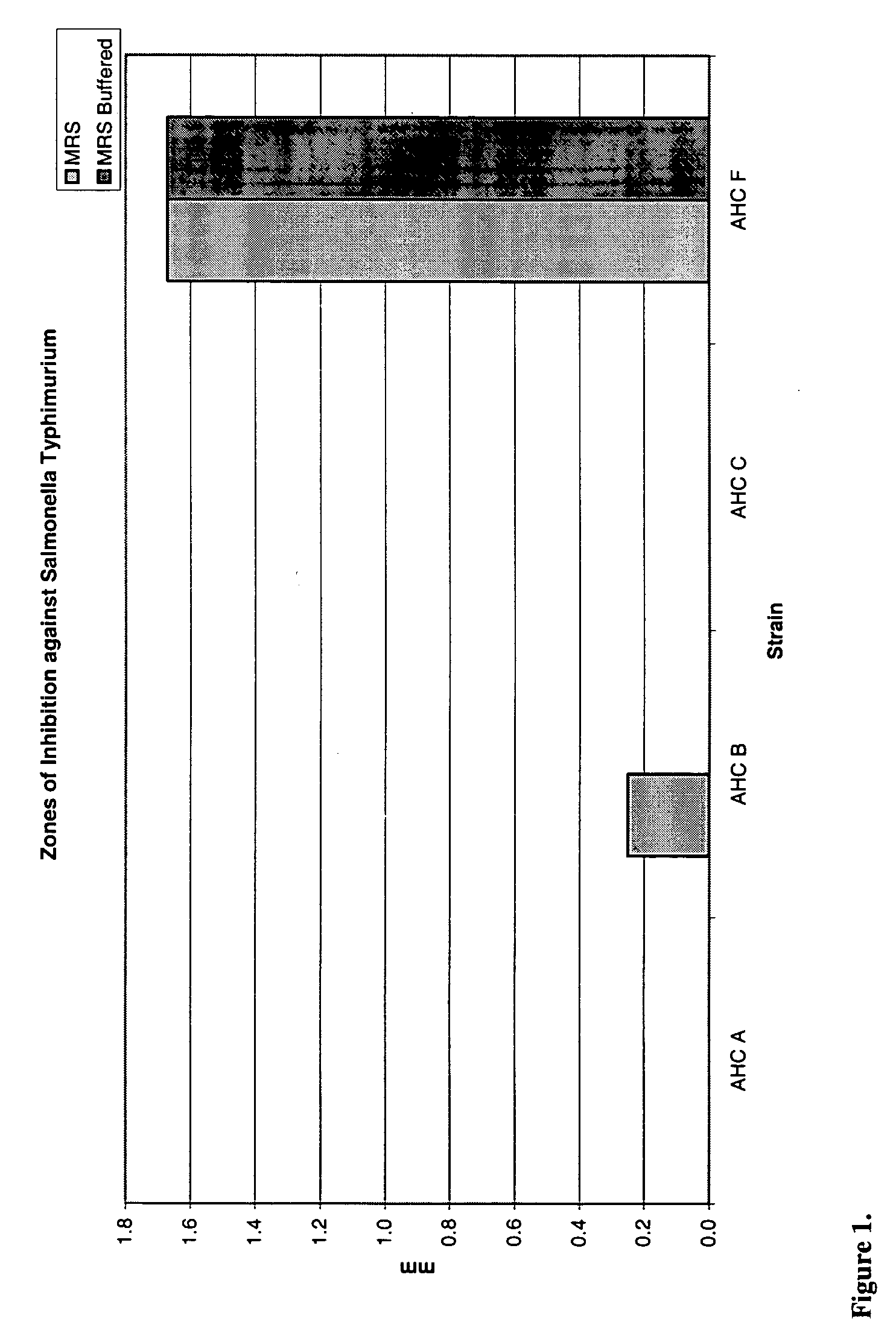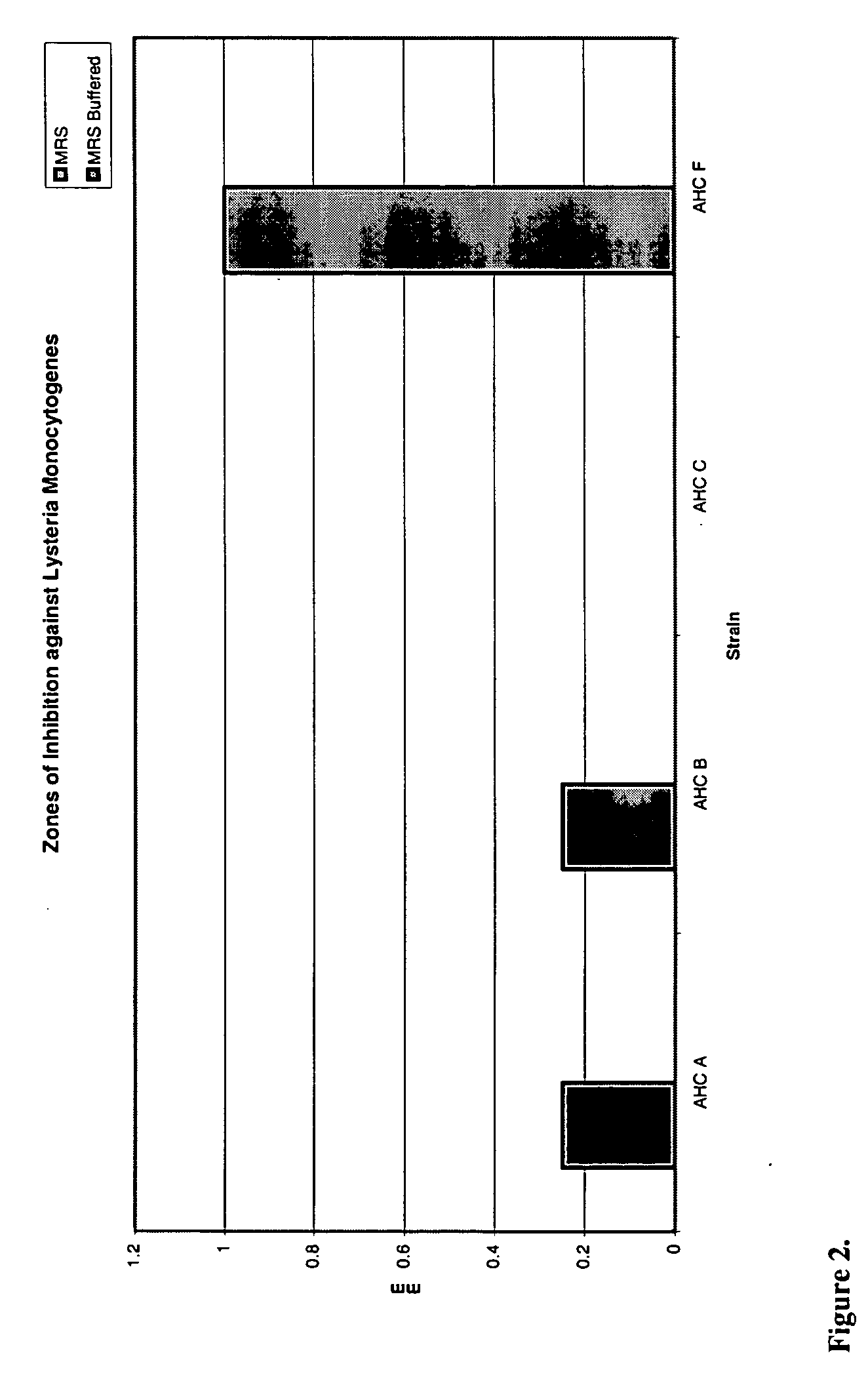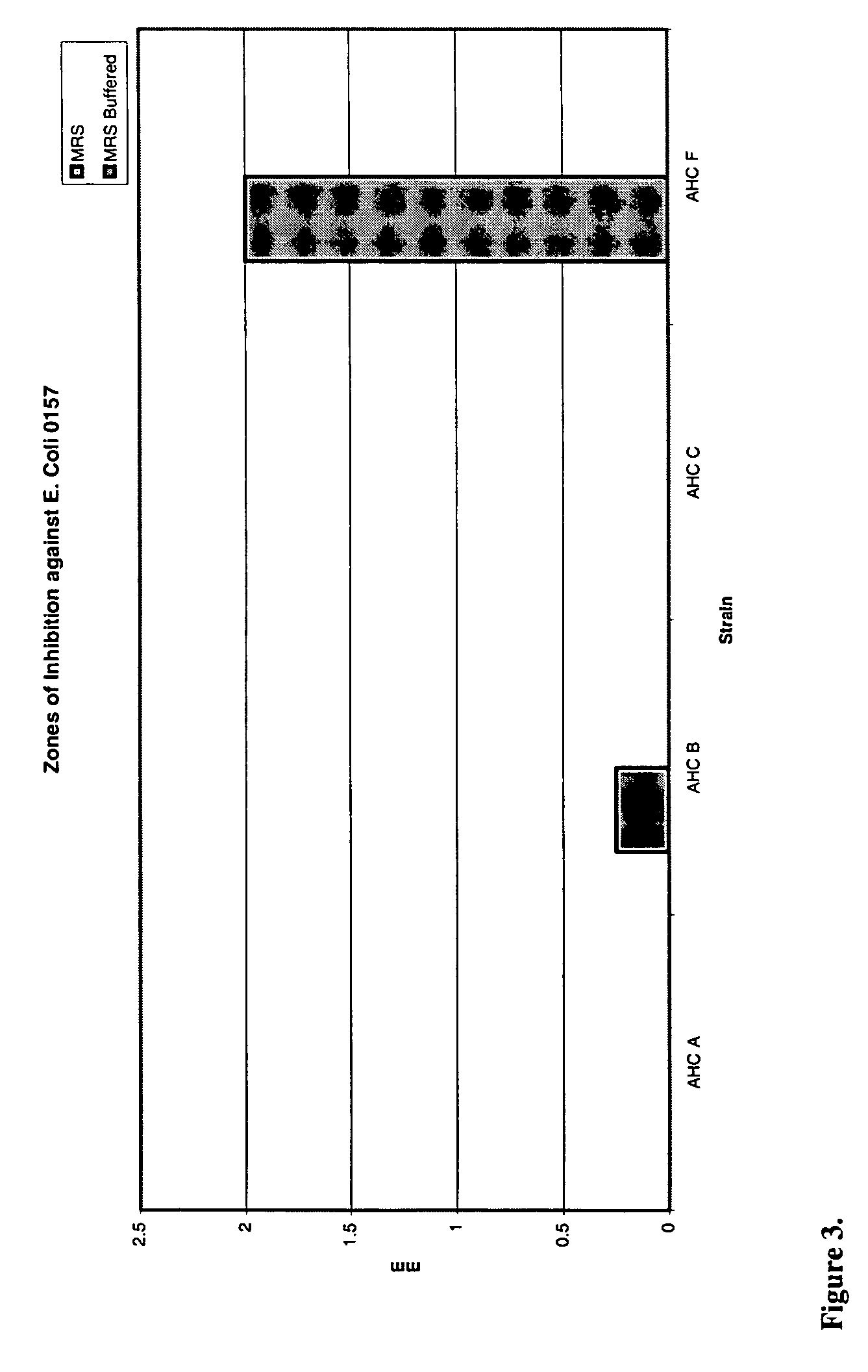Canine probiotic Bifidobacteria globosum
a probiotic and lactic acid bacteria technology, applied in the field of probiotic microorganisms, can solve the problems of high complexity of defense mechanisms to protect the gastrointestinal tract of mammals from colonisation by pathogenic bacteria, promote inflammation and aberrant immune responses, and promote inflammation and aberration of immune responses. , to achieve the effect of improving pet health
- Summary
- Abstract
- Description
- Claims
- Application Information
AI Technical Summary
Benefits of technology
Problems solved by technology
Method used
Image
Examples
example 1
Isolation of Bifidobacteria globosum Bacteria from Canine GI Tracts
[0089] Canine intestinal samples were obtained from healthy dogs presenting at the local veterinarians for owner initiated and approved euthanasia. All animals were healthy and disease-free. The colon, mid-colon, caecum and ileum of each dog were dissected in order to expose the mucosa.
[0090] Supernatants were removed following agitation of the mucosal tissue (vortexed for 1 minute) and following mechanical homogenisation of the tissue. Each supernatant was plated on Reinforced Clostridia Agar (RCA) or MRS plus 0.05% cysteine plus mupirocin. These were incubated anaerobically, using the Anerocult GasPak system, for 24 hours at 37° C. Isolated colonies from the plates were re-streaked onto either MRS or RCA and again grown anaerobically under the same conditions. Isolated colonies were re-streaked a further 4 times in order to purify a single strain. Colony morphology and microscopic appearance were assessed. Suitab...
example 2
Screening for Anti-Microbial Activity
[0092] The isolated Bifidobacteria globosum bacterial strains were incubated anaerobically in TPY broth. 2□1 of each culture were spotted onto TPY agar plates and incubated anaerobically overnight. Salmonella typhimurium, Listeria monocytogenes, Listeria innocua and Eschericia coli 0157H45 were pre-grown overnight and 100 μl inoculated into molten agar (1% v / v). This indicator culture was poured onto the surface of the inoculated MRS or TPY plates. Following overnight incubation, zones of inhibition around the probiotic colony were measured. All experiments were performed in duplicate on three separate occasions. In addition, incorporating the buffer 2% betaglycerophosphate into the agar enabled assessment of the contribution of acid production to the observed pathogen inhibition in vitro.
[0093] The data presented in FIGS. 1, 2, 3 and 4 clearly demonstrate that the Bifidobacteria globosum bacteria strains of the present invention obtainable by ...
example 3
In Vitro Measures of Survival and Colonisation
pH Tolerance
[0094] Bacterial cells were harvested from overnight cultures, washed twice in phosphate buffer (pH 6.5) and resuspended in TPY broth adjusted with 1M HCl to pH 2.5. The cells were incubated anaerobically at 37° C. and their survival measured at intervals of 0, 30, 60, 120, 240 and 360 minutes using the plate count method known to those skilled in the art.
[0095]FIG. 5 clearly demonstrates that five strains were resistant to pH 2.5 over 1 hour. Table 2 summarises this data per strain.
TABLE 2StrainConc. After 1designationStarting Conc.hourViability (%)AHC A1.50E+081.20E+0880AHC B4.00E+075.50E+07137AHC C1.10E+081.50E+08136AHC F6.00E+086.00E+08100AHC 72.50E+074.50E+07180
Bile Resistance
[0096] The bacterial strains were streaked onto TPY agar supplemented with porcine bile (Sigma) at 0.5%, 1% and 5% (w / v). Plates were incubated at 37° C. under anaerobic conditions and the growth recorded after 24 hours. Growth was compared ...
PUM
| Property | Measurement | Unit |
|---|---|---|
| pH | aaaaa | aaaaa |
| pH | aaaaa | aaaaa |
| temperature | aaaaa | aaaaa |
Abstract
Description
Claims
Application Information
 Login to View More
Login to View More - R&D
- Intellectual Property
- Life Sciences
- Materials
- Tech Scout
- Unparalleled Data Quality
- Higher Quality Content
- 60% Fewer Hallucinations
Browse by: Latest US Patents, China's latest patents, Technical Efficacy Thesaurus, Application Domain, Technology Topic, Popular Technical Reports.
© 2025 PatSnap. All rights reserved.Legal|Privacy policy|Modern Slavery Act Transparency Statement|Sitemap|About US| Contact US: help@patsnap.com



